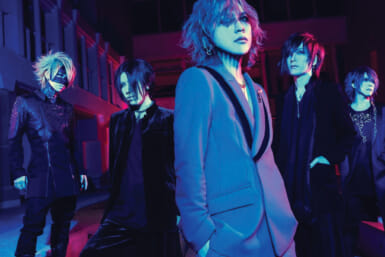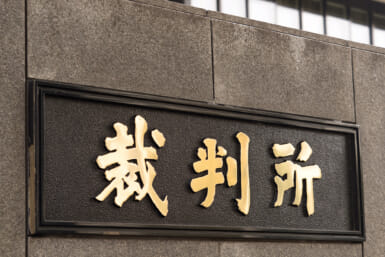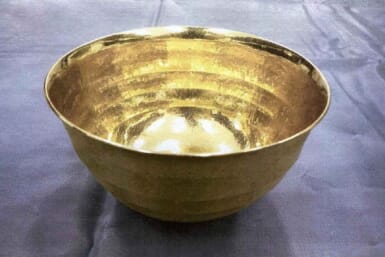by Elyse M. Rogers
JUJIN HOSPITAL
Lately I’ve had several calls from foreign residents in Japan and foreign visitors asking about plastic surgery. One woman was interested in a face lift; one man wanted a nose job, and one Japanese/American college student wondered if she could have her breasts enlarged. In addition, I have received many calls asking about liposuction, which is the removal of adipose tissue (fat) by means of surgery. The “suction” part of the word comes from the fact that in this type of surgery the adipose tissue is actually pulled out of the body by means of a very sophisticated suction machine.
So, it was with great interest that I scheduled a meeting at Jujin Hospital and met with its president (incho), Dr. Fumihiko Umezawa, and Yoichi Tomizawa who works in their public relations department. Both were kind enough to tell me something about the hospital and give me a short tour. (And I’d like to thank Mrs. Shinobu Furukawa, on the Tokyo Weekender staff, who accompanied me and acted as interpreter.)
HOSPITAL HISTORY
I was surprised to learn that this hospital originally opened in 1938 as the first plastic surgery hospital in the nation. At that time it was mainly to fix unsightly noses, since the average diet at that time was mainly rice, with no calcium for good bone formation. So, many noses were extremely flat and close to the skin, and people wanted “higher” noses with more definition.
For a time the clinic (it was a “clinic” before it was a hospital) was called Keishu Do which translates to “make younger.” But, always the hospital has been a front-runner in cosmetic surgery. In fact they held the first Congress of Cosmetic Surgery in Japan and started the Association for Cosmetic and Plastic Surgery for doctors in Japan. (Dr. Umezawa believes that they were the first in the world to recognize Cosmetic Surgery as a specialty.)
Today the Jujin Hospital is the head office for the Japanese Foundation for Cosmetic Surgery, and Dr. Umezawa is president of the Japan Society of Aesthetic Surgery.
It might be helpful to explain that there are important differences between Cosmetic Surgery and Reconstructive Surgery. Reconstructive Surgery is the usual title of the division of plastic surgery in major hospitals or universities. This is plastic surgery done for the purpose of reconstructing tissue, as in the case of someone who is badly scarred in an automobile accident. Cosmetic surgery, on the other hand, is surgery to enhance beauty or perfection in the body. Even today, university hospitals still only have departments of Reconstructive Surgery but not Cosmetic Surgery.
In 1978 the law was changed so that Cosmetic Surgery was recognized and licensed and cosmetic surgeons could have the same privileges as other surgeons.
Wanting to learn more about new techniques, they invited Dr. M.J. Berson who came from America to teach the Jujin staff the technique of face lifting in 1956.
The hospital has grown a bit like ‘Topsy” and so buildings keep changing as to function. There are now three buildings, and there are plans to tear the oldest building down and put up a brand new one “in the next few years.” Right now, all buildings house some offices, some clinics and some hospital beds. But the main surgery building is the pretty one (with the red canvas canopied windows).
Much of the surgery is done on an out-patient basis, but if an overnight (or two) stay is needed, hospital rooms of one, two and three beds are available. There is an additional charge of ¥13,000 per night for the private rooms. Unfortunately, I didn’t get to see the rooms (all were booked at the time I was there) but I was told they do not have private baths (in most cases of plastic surgery bathing is discouraged for a few days anyway). Western food is available for in-patients on request.
FUMIHIKO UMEZAWA, M.D.
Dr. Umezawa comes to the clinic with very fine credentials. He is a graduate of Tokyo University Medical School, and physicians run in this family. In fact, he says for 14 generations his family have been physicians. His grandfather began the hospital and his father ran the hospital before he took over the reigns.
He is proud of his hospital and says he “enjoys the work.”As he explains it, he “makes people happy,” and that’s a lot of satisfaction. There must be satisfaction too in seeing his patients “make it” on stage and screen. He not only has “before and after” pictures of beautiful looking people on his walls (the “after” pictures are beautiful — not all of the “befores” are), and while we were talking he jumped up and got a huge poster of a terrific looking young lady who was advertising a product. When I asked him what he’d done for the young lady (nose, eyes, or what?) he said he couldn’t remember. But he knew he did something.
In a way that was more impressive than any specific procedure he might have mentioned; even the surgeon couldn’t tell the reconstructed part from the natural.
The doctor speaks competent English although he has never lived outside of Japan. “I talk to my British neighbors,” he told me. He’d like to encourage some of his young doctors to go and live in an English-speaking country to learn the language, but he says, “they don’t want to.”
HOSPITAL STATISTICS
The hospital has 50 beds, 15 doctors and a total staff of more than 100. According to Dr. Umezawa, about 10 of the doctors are “young doctors” and about five are older ones “trained by my father.” About 15 % of their patients are foreigners.
The clinic is open daily from 9 a.m. to 5:30 p.m. every day, but since most of the doctors are busy doing surgery, they suggest that new patients come around 10 a.m. or 1 p.m. Believe it or not, it is possible to have a consultation and surgery on the very same day, although it is rare because the doctors are usually very busy and scheduled in advance. Usually, an initial consultation is made, the procedure is settled upon, and surgery is scheduled for a later date.
COSMETIC PROCEDURES
I asked for their most requested procedures and got a long list: 1) Nose and chin surgery, 2) Eye lid surgery, 3) Wrinkle-removal surgery, 4) Breast enlargement surgery, and 5) Liposuction.
• Eye surgery is extremely popular with Japanese women who wish to have a “double eyelid.” As is stated in their literature: “The eye is the most decisive factor in the appearance of a human being. Many Oriental people have ‘single’ eyelids and even if the eyelids are ‘double,’ if the width is narrow, the eyes look ‘single.’ In both cases it is possible to make the eyes ‘double’ to one’s preference. The eyes become more charming by this operation not only because they become ‘double’ but because the eyelids turn outward and upward,”
• Liposuction. This new technique has been very popular in the West, and one that many people are interested in. It sounds too good to be true—get rid of unwanted fat not by dieting but simply by having the fat suctioned out.
Well, unfortunately it is rather too good to be true. Getting rid of overall unwanted fat is just not that simple. But it can be successful in certain cases. The best candidates for liposuction are those patients who have one area, particularly the upper thighs (the so-called saddle-bag syndrome), where there are large fat deposits. A personal work-up is a must, to determine if the surgery has a chance of being successful. Anyone interested in this cosmetic surgery should be sure to talk frankly with the surgeon about the expected outcome with liposuction and his/her own particular problem of fatty tissue.
COSTS
As you might expect, you don’t get well-qualified surgical specialists at bargain-basement rates. For Cosmetic Surgery you need to be healthy, willing and somewhat well heeled. Prices vary, of course, depending not only on the procedure but on the patient’s individual situation as well. Even the same procedure will take more time or a longer recovery period on different patients.
Some average figures: ¥200,000 for nose or eye surgery; ¥500,000 to ¥1 million for liposuction, and ¥1 million for a face lift.
The hospital is fully equipped, so you need only your toothbrush to check in. The hospital has no parking, so unless you’re absolutely determined to drive, I’d suggest public transportation or a taxi. (You know how parking is in downtown Tokyo.)
The hospital is easy to find since it has huge signs (in both kanji and romaji) on the front and on top. (If you get lost, look up for their distinctive elongated red cross.) If you take the Ginza Subway Line, get off at Shimbashi, climb to the sidewalk through exit #5 and you’ll almost fall into one building’s main lobby. The Yamanote-sen’s Shimbashi station is also a stone’s throw away. See the map.
Jujin Hospital, 1-12 Shinbashi, Minato-ku, Tokyo, Phone 571-2111-8, www.jujinhospital.com.








